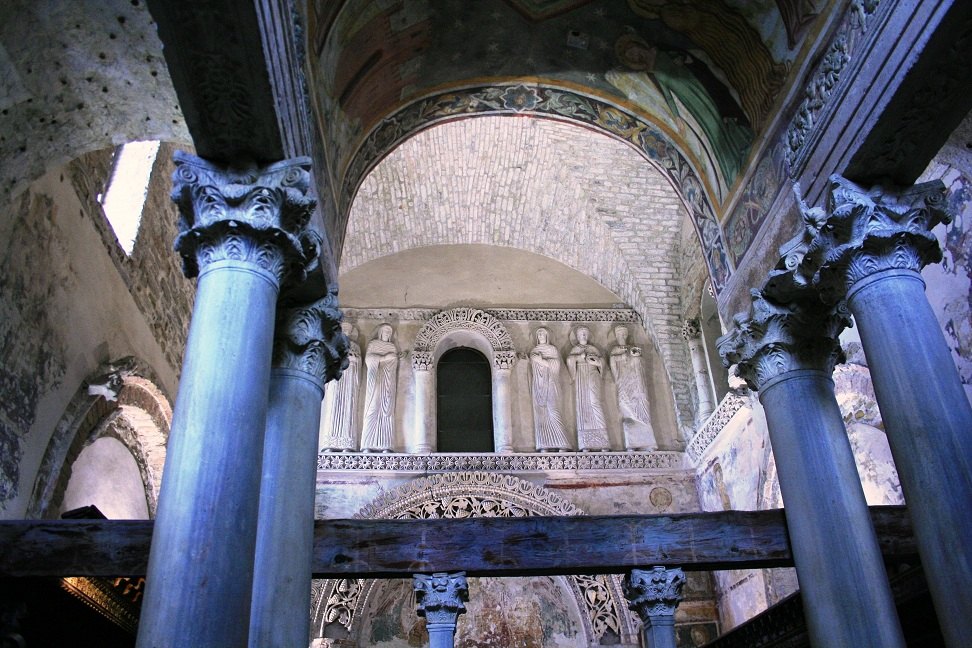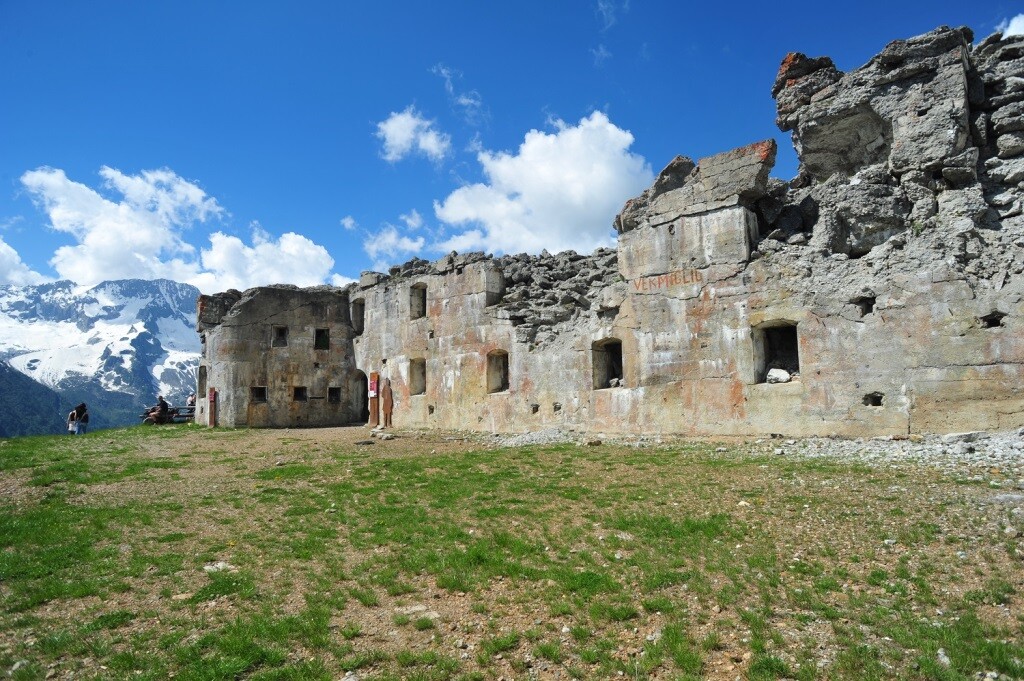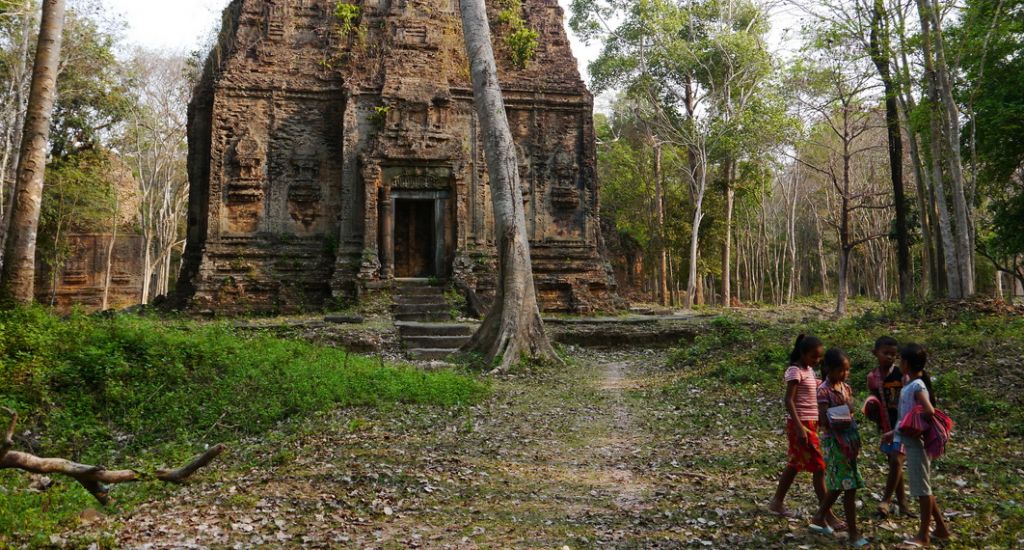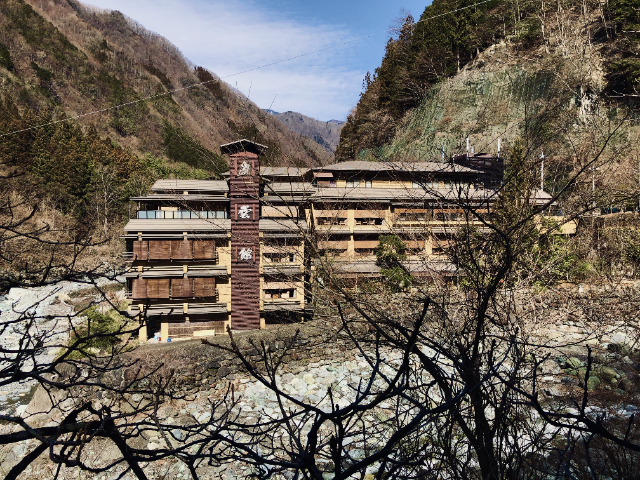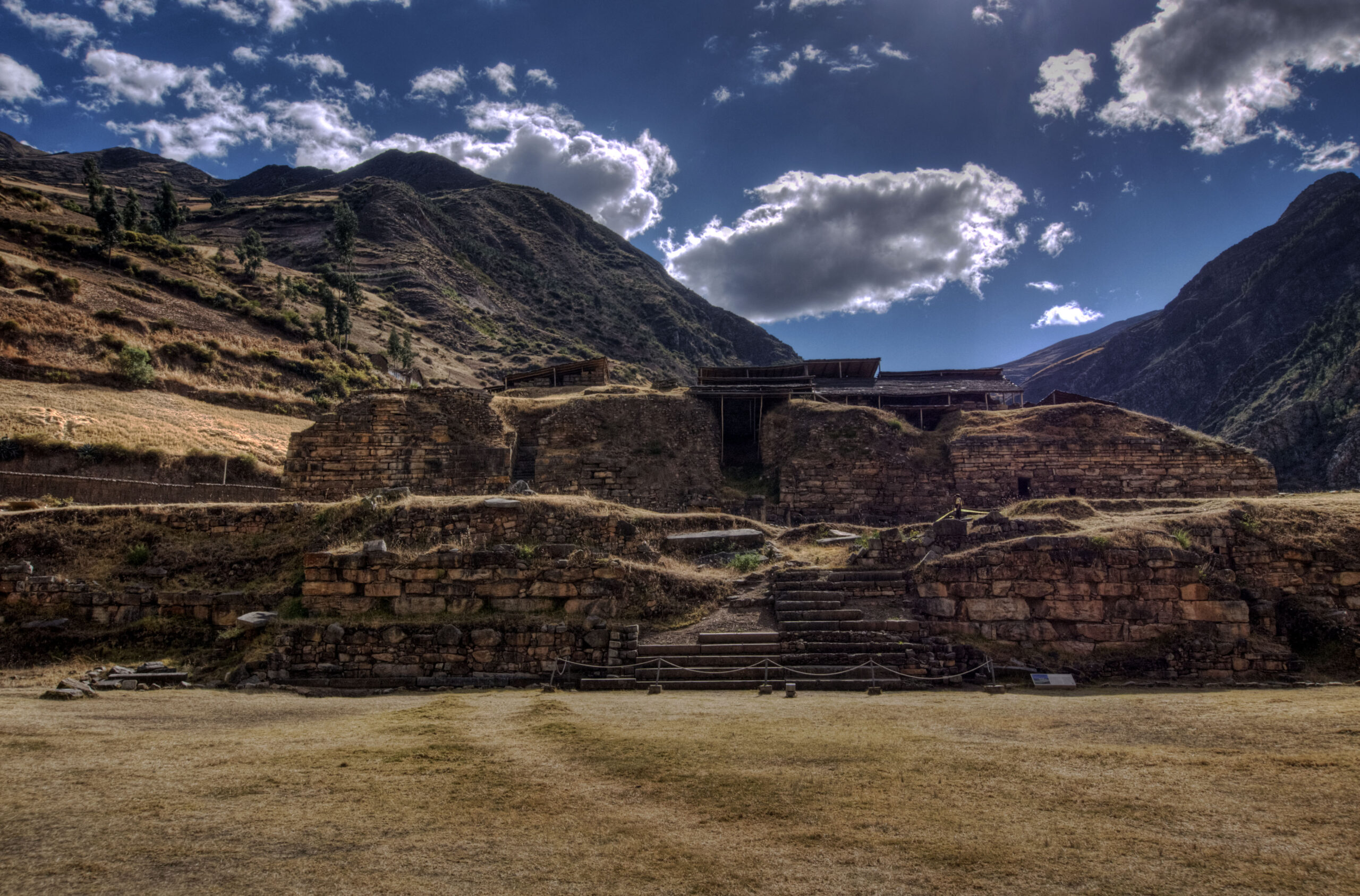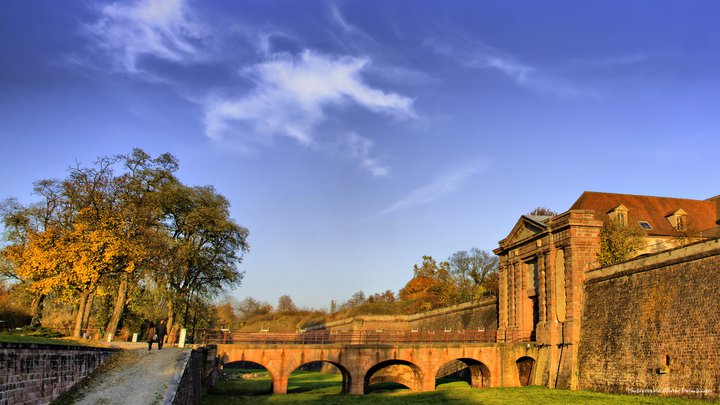Its origins, dating and function are uncertain; the prevailing theory is that the Tempietto was built in the second half of the 8th century and is thought to have been the chapel of a female Benedictine monastery, the Monastery of Santa Maria in Valle.
The Tempietto Longobardo is constituted by a square hall with a cross vault and by the presbiterio with three small barrel-vaulted naves, it is moreover characterized by frescos realized by Byzantine workers and by stucco decorations.
In the hall there are also wooden stalls dating back to the 14th century, decorated with foliate motifs and representations of fantastic animals.
In the course of the centuries the Tempietto was "restructured" several times: the frescoes that decorate (or decorated, since many of them have recently been removed and exposed in the Christian Museum and in the Archaeological Museum) the walls are proof of this: frescoes that go from the XI to the end of the XIV century approximately. The building consists of a central body (externally with a square plan, with a weak cross inside) and of the presbytery with three apses, of which the central one is wider. The vault is cross vault in the hall, barrel vault in the apses. Monolithic lintels of the Roman age supported by twin columns with Corinthian capitals separate the naves, while an iconostasis with smooth plutei delimits the area of the hall from the presbytery. It is in the entrance wall (the western one) that one can admire, although partially, the original decoration of the Tempietto: in fact, the exceptional, famous stuccoes and some frescoes have remained in a good state of preservation.
The stucco decoration (composed of plaster, lime and marble dust) is carried out on two registers. In the upper one, two horizontal bands, worked with a stylized rosette motif deeply engraved, with a cavity in the center once filled with glass paste (only in some visible), delimit a space in which there are six Saints in high relief leaning against the wall, flanked in ternary groups, to the right and left of a single blind hole, adorned with an archivolt, also in stucco with fine motif similar to a lace, resting on two columns topped by Corinthian capitals. In the lower register an admirable openwork band runs with decorative function around the lunette of the Christ Logos in fresco. The main element of the ornament is the beautiful spiral vine shoot with bunches and vine leaves enclosed in a double c
